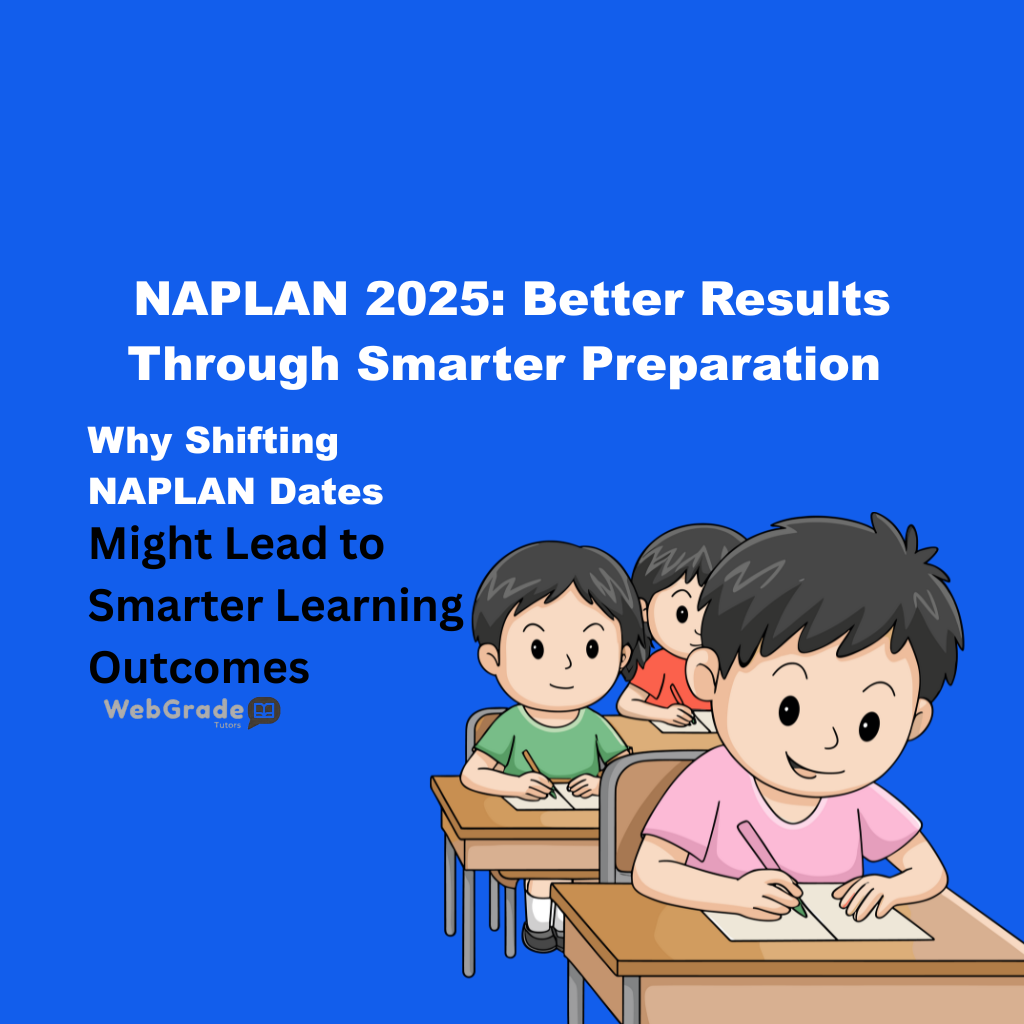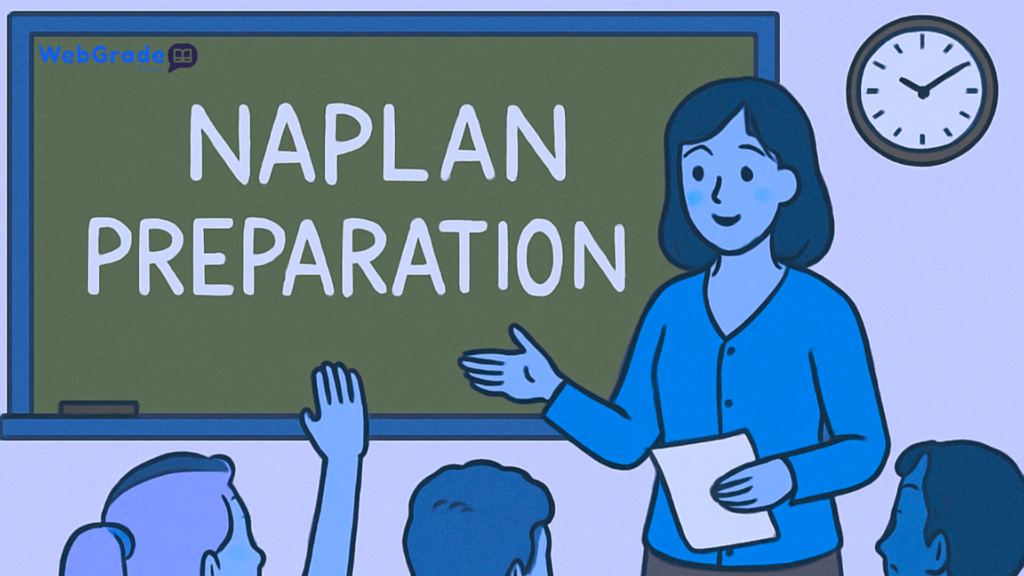Visit our website
Explore content tailored to your curriculum and country—from foundational skills to exam prep.
Explore ContentPlease add some widget in Offcanvs Sidebar

The NAPLAN tests are undergoing significant changes. These changes involve shifting the testing dates to earlier in the year. This shift aims to provide earlier feedback to educators and students.
Early feedback can help tailor teaching strategies to address student weaknesses. It aligns with the broader goals of the Australian Curriculum.
The changes are expected to be fully implemented by NAPLAN 2025. This new schedule could lead to smarter learning outcomes.
Parents, educators, and students need to stay informed about these developments. Understanding the implications is crucial for effective educational planning.
The shift in dates may affect NAPLAN preparation strategies. It could also influence how NAPLAN results are used to gauge student performance.
The decision to shift NAPLAN Test Window from the need for timely educational feedback. By assessing students earlier, schools can identify learning gaps sooner. This allows for effective adjustments to teaching throughout the year.
Educators and stakeholders have long advocated for real-time insights. The change provides schools with data when it is most actionable. This timely data is crucial for making informed decisions about curriculum and instruction.
Additionally, the shift in dates fits well with the rhythm of the school year. It minimizes disruptions and aligns testing with ongoing learning activities. This alignment is designed to enhance the teaching and learning experience for students and teachers alike.
They answer questions about different texts – from stories to factual and persuasive passages.
This checks spelling, grammar, and punctuation.
Tests skills in maths areas like numbers, algebra, measurement, geometry, and statistics.
The change in NAPLAN dates necessitates a shift in preparation strategies. Teachers and students must now adjust their schedules to allow for earlier test readiness. This change demands a more proactive approach to covering the curriculum.
Preparation for NAPLAN will require a focus on key areas sooner in the academic year. Teachers might have to start diagnostic assessments and focused practice earlier. This could ensure students are comfortable with the exam format before testing day arrives.
Parents and educators must collaborate to support students through this transition. Awareness of the new timeline is crucial for effective planning. New preparation methods could include:

These NAPLAN changes can help students build resilience by encouraging consistent and effective study habits. Using a range of learning strategies not only reduces test anxiety but also boosts student confidence. With the right exam preparation plans in place, learners are more likely to achieve better academic performance and develop stronger long-term learning outcomes.
Shifting the NAPLAN dates could significantly alter the timing and usefulness of exam results. Earlier testing provides quicker access to detailed insights into students’ strengths and weaknesses. This timely feedback is crucial for implementing targeted improvements.
Faster feedback allows teachers to adapt instruction methods during the school year, rather than waiting until the next term. More immediate data can lead to more effective teaching strategies and interventions. This approach ensures students receive support when it’s most needed.
The change in timing offers several potential benefits:
Ultimately, these changes aim to enhance learning outcomes by using NAPLAN results as a dynamic tool for improvement. Early insights help refine educational approaches, benefiting both students and educators through responsive, informed teaching practices.
The shift in NAPLAN testing dates directly impacts students in key stages. Year 3, Year 5, Year 7, and Year 9 students must adapt their preparation strategies to align with this new schedule.
Earlier testing can help reduce stress by spacing assessments over the academic year. With more time to address knowledge gaps, educators can offer tailored support to students needing extra help.
Parents and teachers must remain informed about this transition. Being proactive can significantly enhance students’ readiness for the exams. Understanding the new timeline can help in planning study schedules more effectively.
Key considerations for these students include:

Navigating these changes thoughtfully will enable students to achieve optimal results and improve their overall learning experience. The earlier NAPLAN schedule serves as an opportunity for growth and development.
Educators must modify their teaching methods to align with the new NAPLAN dates. Adapting teaching strategies is crucial for optimizing learning outcomes. Teachers need to reassess their curriculum planning and pacing.
Active classroom engagement can help students adjust more easily. When teachers integrate continuous assessment, it encourages steady progress. This strategy supports both literacy and numeracy development.
To maximize success, consider these key actions:
An adaptive teaching approach ensures students are better prepared. By shifting focus towards consistent learning and regular feedback, teachers can foster a supportive educational environment. Emphasizing concept mastery over cramming is vital for achieving improved NAPLAN outcomes.
Expert online tutoring can significantly impact student preparation for NAPLAN. It provides personalized support tailored to individual needs. This approach is effective for addressing specific literacy and numeracy gaps.
NAPLAN-style questions are crucial for familiarizing students with the test format. Practicing these question types builds confidence and improves performance. It also aids in understanding the real-world application of skills.
To optimize NAPLAN preparation, consider these steps:
Investing in expert online tutoring offers a competitive edge. It helps students tackle the challenges of NAPLAN with higher confidence. Such dedicated attention can lead to noticeable improvements in test results.
NAPLAN 2025 aims to be more aligned with modern educational needs. This shift is not just about testing earlier but using assessments to support ongoing improvement. Early test dates will provide timely insights, aiding swift academic interventions.
The future of NAPLAN holds promise for more balanced educational strategies. As the changes take effect, they should lead to smarter, more adaptable learning experiences. The emphasis will be on ensuring that NAPLAN remains a relevant tool, closely integrated with the evolving Australian Curriculum to better assess and enhance student learning outcomes.
Ready to help your child feel confident and prepared for NAPLAN? At WebGrade Tutors, we offer personalized learning plans and expert online tutoring to help students master key skills. Sign up for a free trial today and discover how our tailored approach can make a difference.
The most significant change to NAPLAN is the shift of the national testing window from May to March. This adjustment was made to provide teachers and schools with student performance data much earlier in the academic year. The primary goal is to allow educators to use the results to inform their teaching strategies and provide targeted support to students for the remainder of the year, rather than receiving the data too late to implement meaningful interventions. Starting in 2023, NAPLAN also moved to a fully online format (except for the Year 3 writing test) and replaced the 10 achievement bands with four proficiency levels: 'Exceeding', 'Strong', 'Developing', and 'Needs additional support
With the tests now in March, preparation needs to begin earlier in the school year. This change requires a more proactive approach from both teachers and students, integrating learning strategies and NAPLAN-style questions sooner. For students in Years 3, Year 5, Year 7, and Year 9, this means exam preparation plans should focus on consistent study habits rather than last-minute cramming. The new timeline encourages a steady development of literacy and numeracy skills, which can help reduce test anxiety and build confidence.
The NAPLAN results are now reported using four proficiency levels: Exceeding, Strong, Developing, and Needs additional support. Students achieving 'Strong' or 'Exceeding' are considered to be at or above the expected standard for their year level. Those in the 'Developing' or 'Needs additional support' categories may require further assistance to meet the learning outcomes expected for their age. This new system, implemented in NAPLAN 2023, aims to give parents and teachers a clearer, more easily understandable snapshot of a student's performance. However, due to these changes, results from NAPLAN 2023 onwards cannot be directly compared to data from previous years.
Expert online tutoring offers personalized learning plans tailored to a student's individual needs, which is especially beneficial for addressing specific gaps in literacy and numeracy. Tutors can provide targeted practice with NAPLAN-style questions, helping students become familiar with the online test format and question types. This one-on-one support can build confidence, reduce exam stress, and help students develop effective learning strategies to tackle the assessments. Many tutoring services offer flexible scheduling and use a variety of resources aligned with the Australian Curriculum.
The changes leading up to NAPLAN 2025 are part of a broader effort to make the assessment a more effective tool within the Australian education system. By providing earlier results, the goal is to support more responsive and personalized teaching. The shift aligns NAPLAN more closely with the Australian Curriculum, emphasizing its role in monitoring student progress in essential literacy and numeracy skills. The focus for the future is on using the assessment data to drive continuous improvement in teaching and learning, ensuring students receive the support they need to succeed.
Receiving NAPLAN results earlier in the school year allows teachers to make timely adjustments to their instructional methods. Instead of waiting until a new term, educators can quickly identify learning gaps at both an individual and a classroom level. This timely data enables them to implement targeted interventions, adapt lesson plans, and create personalized learning plans to address specific student weaknesses in literacy and numeracy. Ultimately, this responsive approach helps foster a more dynamic and supportive learning environment.
Explore country-specific content, try a free 60-minute class, and join thousands of learners growing with WebGrade Tutors.
Explore content tailored to your curriculum and country—from foundational skills to exam prep.
Explore ContentConnect with an expert tutor, experience our teaching style, and get a custom plan for success.
Book Free TrialAsk questions, get help, and grow your skills with students, parents, and tutors just like you.
Join NowHave a inquiry or some feedback for us? Fill out the form
below to contact our team.
Contact us today, and our team will be happy to help with any inquiries or support you need.
Call us any time:
(+61) 480 008 636Email us 24/7 hours:
info@webgradetutors.comOur location:
85 Great Portland St